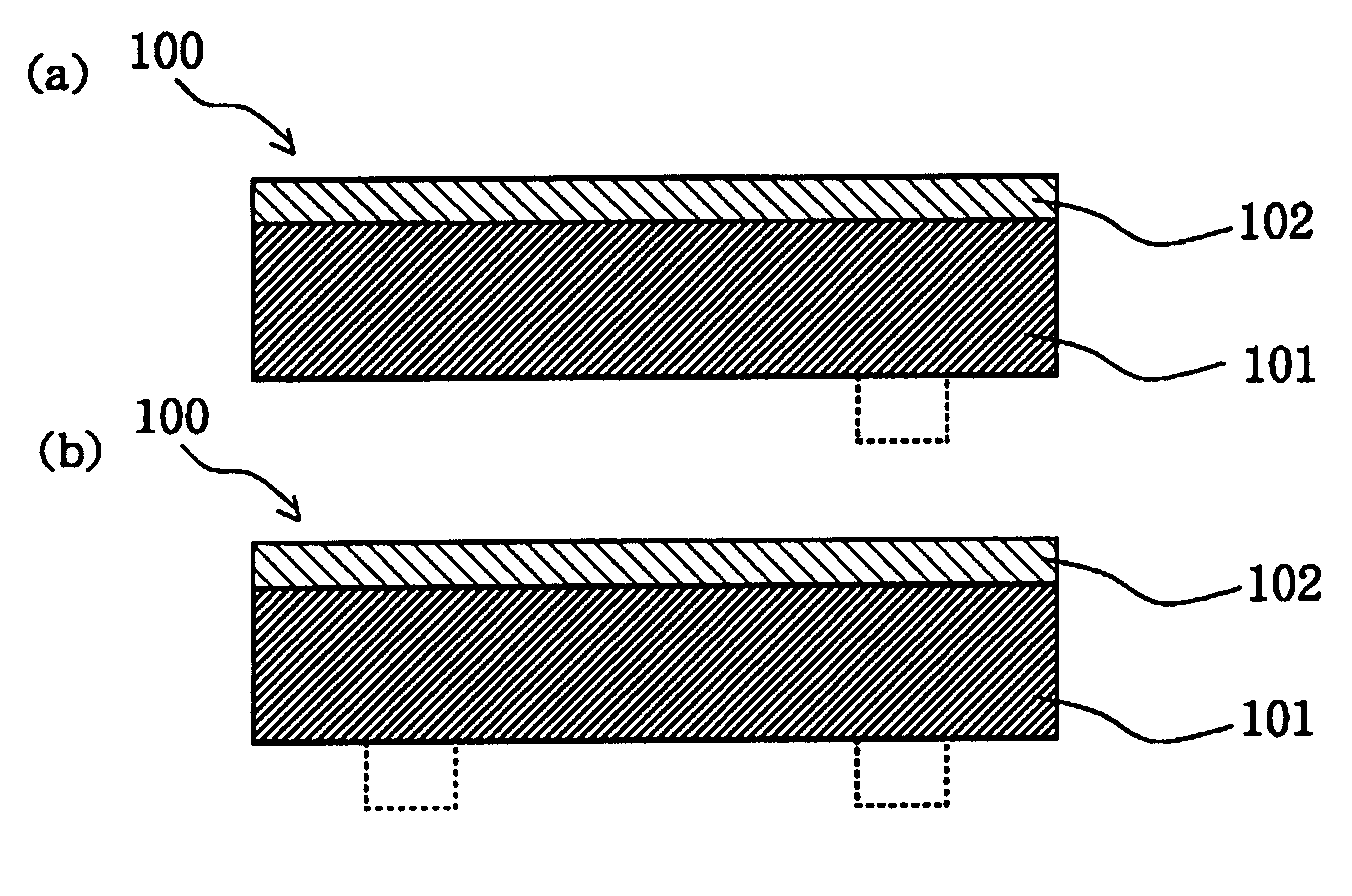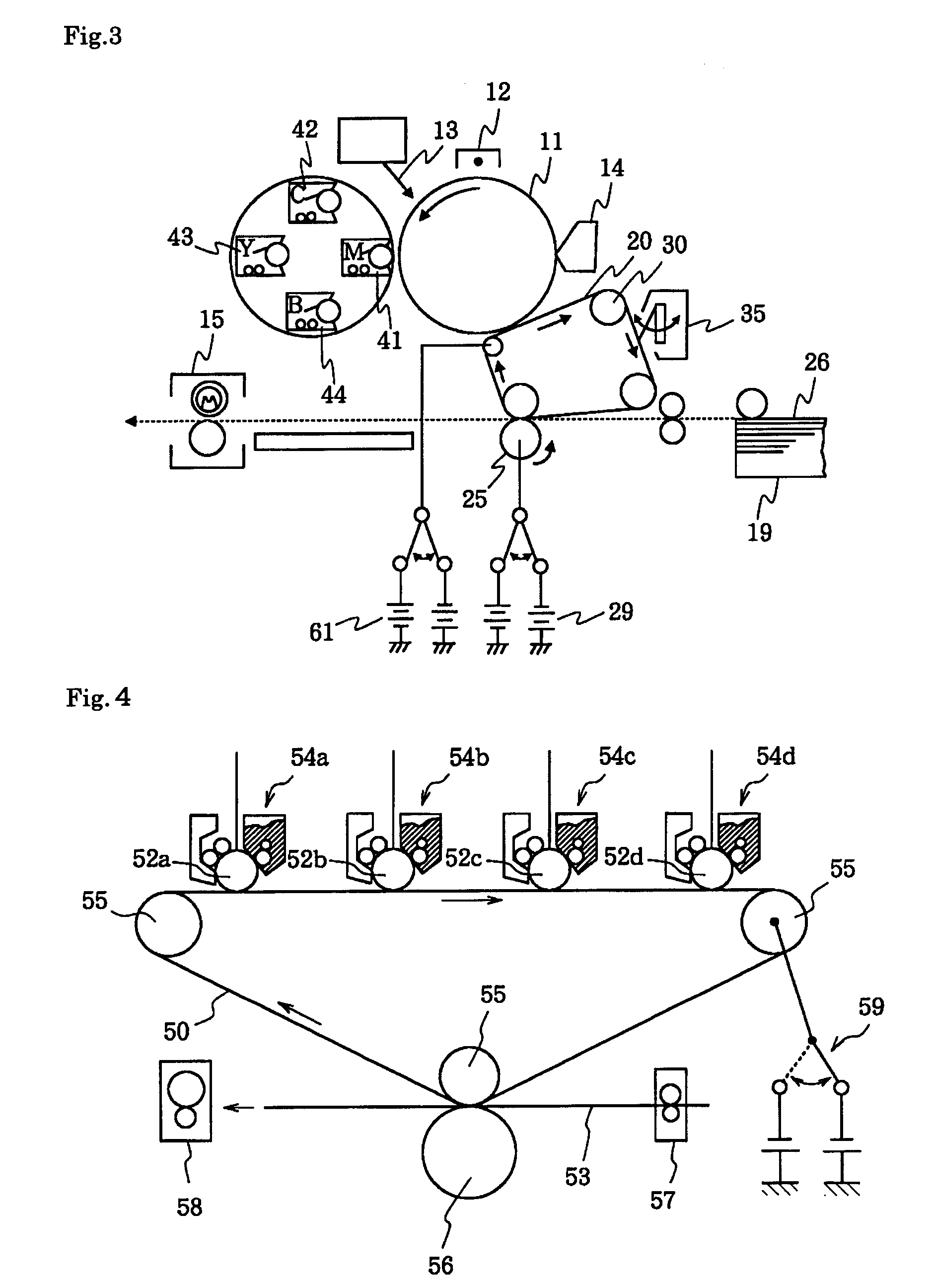Conductive Endless Belt, Method For Producing Same, And Image Forming Apparatus Employing Same
a technology of endless belts and conductive materials, applied in the direction of instruments, coatings, pretreated surfaces, etc., can solve the problems of affecting the transfer efficiency, large and expensive apparatuses, and inability to obtain high image quality, and achieve fast, reliable curing, and stable production
- Summary
- Abstract
- Description
- Claims
- Application Information
AI Technical Summary
Benefits of technology
Problems solved by technology
Method used
Image
Examples
examples 1-1 to 1-11
, Comparative Examples 1-1 and 1-2
[0131] Conductive endless belts of Examples and Comparative Examples were made according to the formula listed in Tables 6 to 8. Specifically, the ingredients of the belt base listed in the tables were melt-kneaded using a biaxial kneader, and the thus obtained paste was extrusion molded using a ring-shaped dice to produce the belt base 101 having an inside diameter of 220 mm, a thickness of 100 μm, and a width of 250 mm. Thereafter, a solvent-free resin layer coating liquid composed of the ingredients listed in the tables was applied to the belt base 101 using a roll coater in a film thickness listed in Tables 9 to 11. With rotating the coated belt 100, the coating of the resin layer 102 was irradiated with ultraviolet light for curing using UNICURE UVH-0252C (manufactured by Ushio Inc.) at an illumination of 400 mW and a cumulative luminous energy of 1000 mJ / cm2, thus the conductive endless belt 100 was obtained. The resin layer 102 was not formed...
examples 2-1 to 2-11
, Comparative Examples 2-1 and 2-2
[0143] Conductive endless belts of Examples and Comparative Examples were made according to the formula listed in Tables 12 to 14. Specifically, the ingredients of the belt base listed in the tables were melt-kneaded using a biaxial kneader, and the thus obtained paste was extrusion molded using a ring-shaped dice to produce the belt base 101 having an inside diameter of 220 mm, a thickness of 100 μm, and a width of 250 mm. Thereafter, a solvent-free resin layer coating liquid composed of the ingredients listed in the tables was applied to the belt base 101 using a roll coater in a film thickness listed in Tables 12 to 14. With rotating the coated belt 100, the coating of the resin layer 102 was irradiated with electron beams for curing using Min-EB (manufactured by Ushio Inc.) under conditions of an applied voltage of 30 kV, a tube current of 300 μA, an irradiation distance of 100 mm, a nitrogen atmosphere of 760 mmTorr, and an irradiation time of ...
PUM
 Login to View More
Login to View More Abstract
Description
Claims
Application Information
 Login to View More
Login to View More - R&D
- Intellectual Property
- Life Sciences
- Materials
- Tech Scout
- Unparalleled Data Quality
- Higher Quality Content
- 60% Fewer Hallucinations
Browse by: Latest US Patents, China's latest patents, Technical Efficacy Thesaurus, Application Domain, Technology Topic, Popular Technical Reports.
© 2025 PatSnap. All rights reserved.Legal|Privacy policy|Modern Slavery Act Transparency Statement|Sitemap|About US| Contact US: help@patsnap.com



